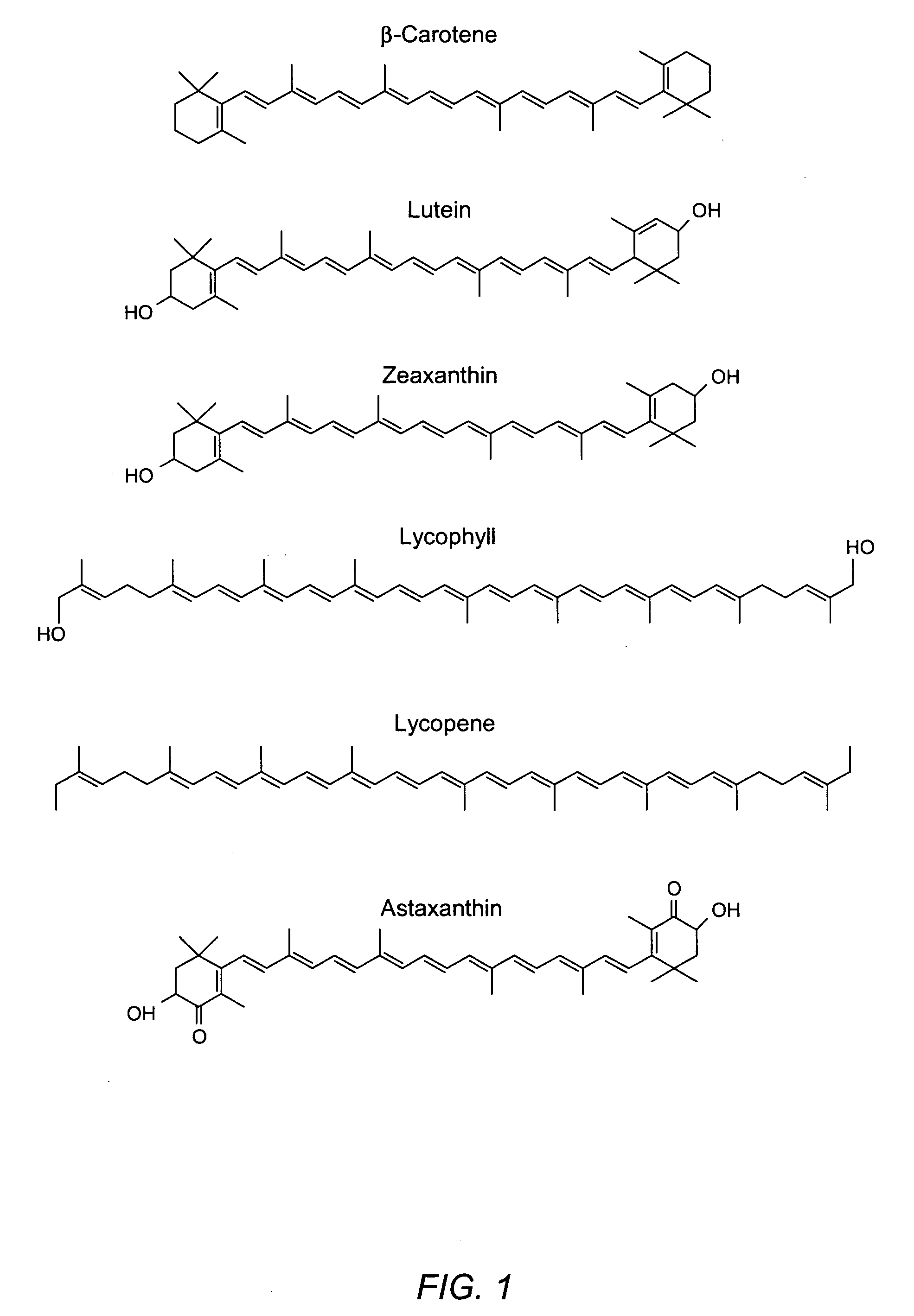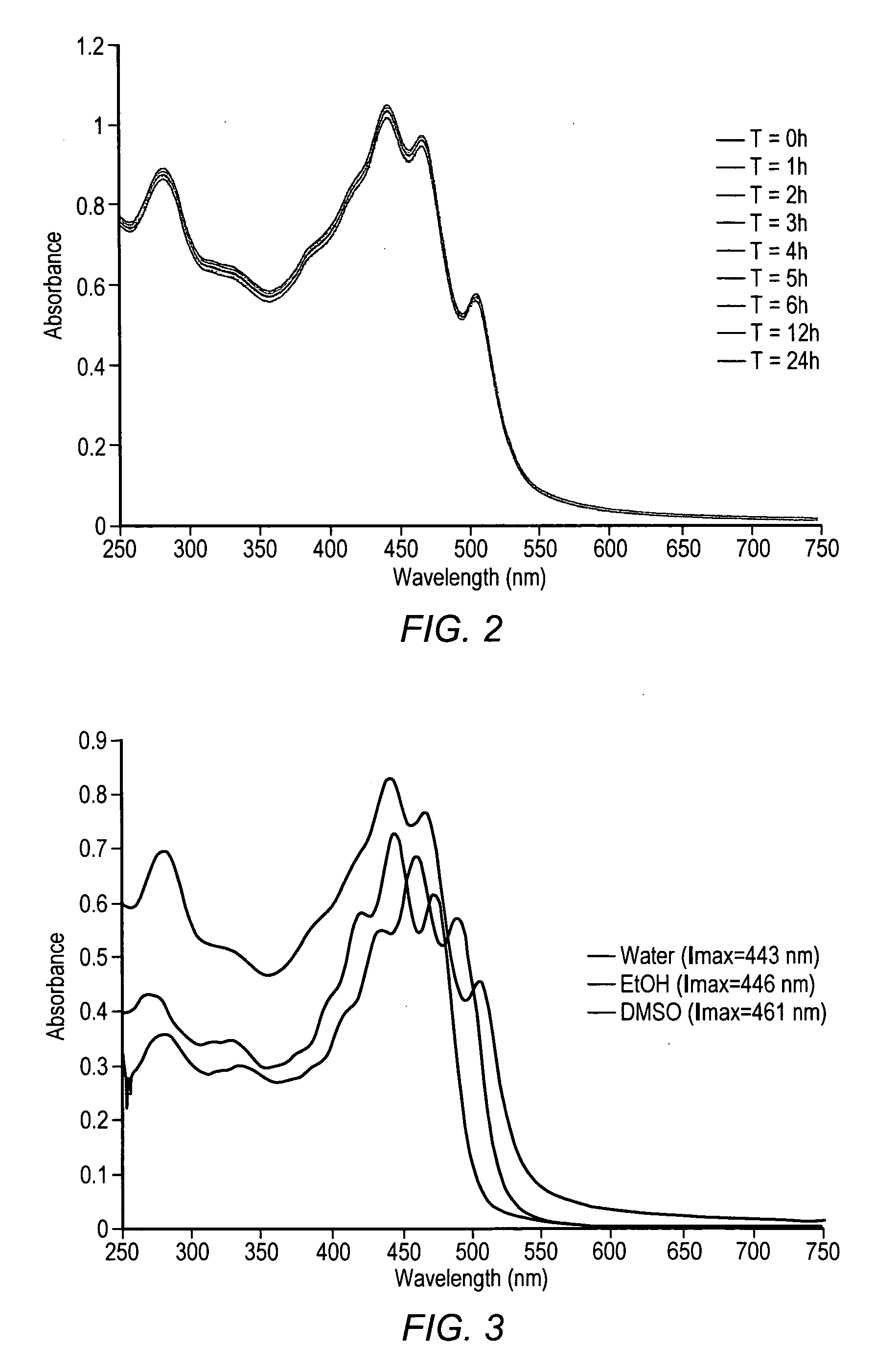Carotenoids, carotenoid analogs, or carotenoid derivatives for the treatment of proliferative disorders
a technology of proliferative disorders and carotenoid analogs, applied in the field of medicinal and synthetic chemistry, can solve the problems of high-dose supplemental -carotene, failed to demonstrate protection, cardiac dysfunction, etc., and achieve the effects of reducing the level of ros, limiting hepatic fibrosis and the progression to cirrhosis, and preventing activation
- Summary
- Abstract
- Description
- Claims
- Application Information
AI Technical Summary
Benefits of technology
Problems solved by technology
Method used
Image
Examples
example 1
[0289] Analysis of CX43 protein expression. Expression of CX43 protein in 10T1 / 2 cells was assessed by Western blotting. 10T1 / 2 cell monolayers were treated with the indicated carotenoid derivatives or with retinoids (as a positive control for the modulation of CX43 expression) 7 days after seeding in 100 mm dishes (Fisher Scientific, Pittsburgh, Pa.). Fours days after the drug was added to the cells, the cells were harvested, total cellular protein was isolated and the total protein concentration thereof was determined using a commercially available Protein Assay Reagent kit (Pierce Chemical Co., Rockford, Ill.). 40 μg of total cellular protein was resolved on an SDS-PAGE gel, transferred to a nitrocellulose membrane, and analyzed by Western blotting using the NuPage Western blotting kit (Invitrogen, Carlsbad, Calif.). CX43 was detected using a rabbit polyclonal antibody (Zymed, San Francisco, Calif.) raised against a synthetic polypeptide corresponding to the C-terminal domain com...
example 2
[0291] Analysis of CX43 protein by indirect immunofluorescence. Expression and assembly of CX43 into plaques was assessed by immunofluorescence staining essentially as described in Rogers et al, 1990, which is incorporated herein by reference. Briefly, confluent cultures of 10T1 / 2 cells were grown on Permanox plastic 4-chamber slides (Nalge Nunc International, Naperville, Ill.) and treated for 4 days as described above. Cells were fixed with −20° C. methanol overnight, washed in buffer, blocked in 1% bovine serum albumin (Sigma, St. Louis, Mo.) in PBS, incubated with the rabbit anti-CX43 antibody, and visualized with Alexa568 conjugated anti-rabbit secondary antibody (Molecular Probes, Eugene, Oreg.). Images were acquired with a Zeiss Axioplan microscope and a Roper Scientific cooled CCD camera.
[0292] Results. It has previously been demonstrated that monolayer cultures of 10T1 / 2 cells have relatively low levels of CX43 protein. Consequently, CX43 immunoreactive plaques, correspondi...
example 3
[0300] Previous studies have demonstrated that treatment of C3H10T1 / 2 immortalized embryonic mouse fibroblast cells and normal human fibroblasts with several carotenoids including lycopene and ‘racemic’ (i.e. the statistical mixture of stereoisomers) astaxanthin results in elevated protein levels of the gap junction protein, Connexin43 (Cx43) (Bertram 1999). Here, we show that treatment of the same mouse fibroblast cell line with 10−5 M, 10−6 M and 10−7 M lycophyll for seven days also resulted in increased Cx43 protein levels. Lycophyll at 10−5 M appeared to induce Cx43 protein increases equivalently to 10−5 M homochiral (3S,3′S) astaxanthin and 10−5 M, 10−6 M lycopene. This is the second such study utilizing these compounds in the mouse fibroblast system for which upregulation of Cx43 has been reported, with slight methods modifications as summarized below. Lycophyll from total synthesis in this case was tested as a mixture of geometric isomers (cis and trans), and the utility here...
PUM
| Property | Measurement | Unit |
|---|---|---|
| concentrations | aaaaa | aaaaa |
| Molecular weight | aaaaa | aaaaa |
| Molecular weight | aaaaa | aaaaa |
Abstract
Description
Claims
Application Information
 Login to View More
Login to View More - R&D
- Intellectual Property
- Life Sciences
- Materials
- Tech Scout
- Unparalleled Data Quality
- Higher Quality Content
- 60% Fewer Hallucinations
Browse by: Latest US Patents, China's latest patents, Technical Efficacy Thesaurus, Application Domain, Technology Topic, Popular Technical Reports.
© 2025 PatSnap. All rights reserved.Legal|Privacy policy|Modern Slavery Act Transparency Statement|Sitemap|About US| Contact US: help@patsnap.com



